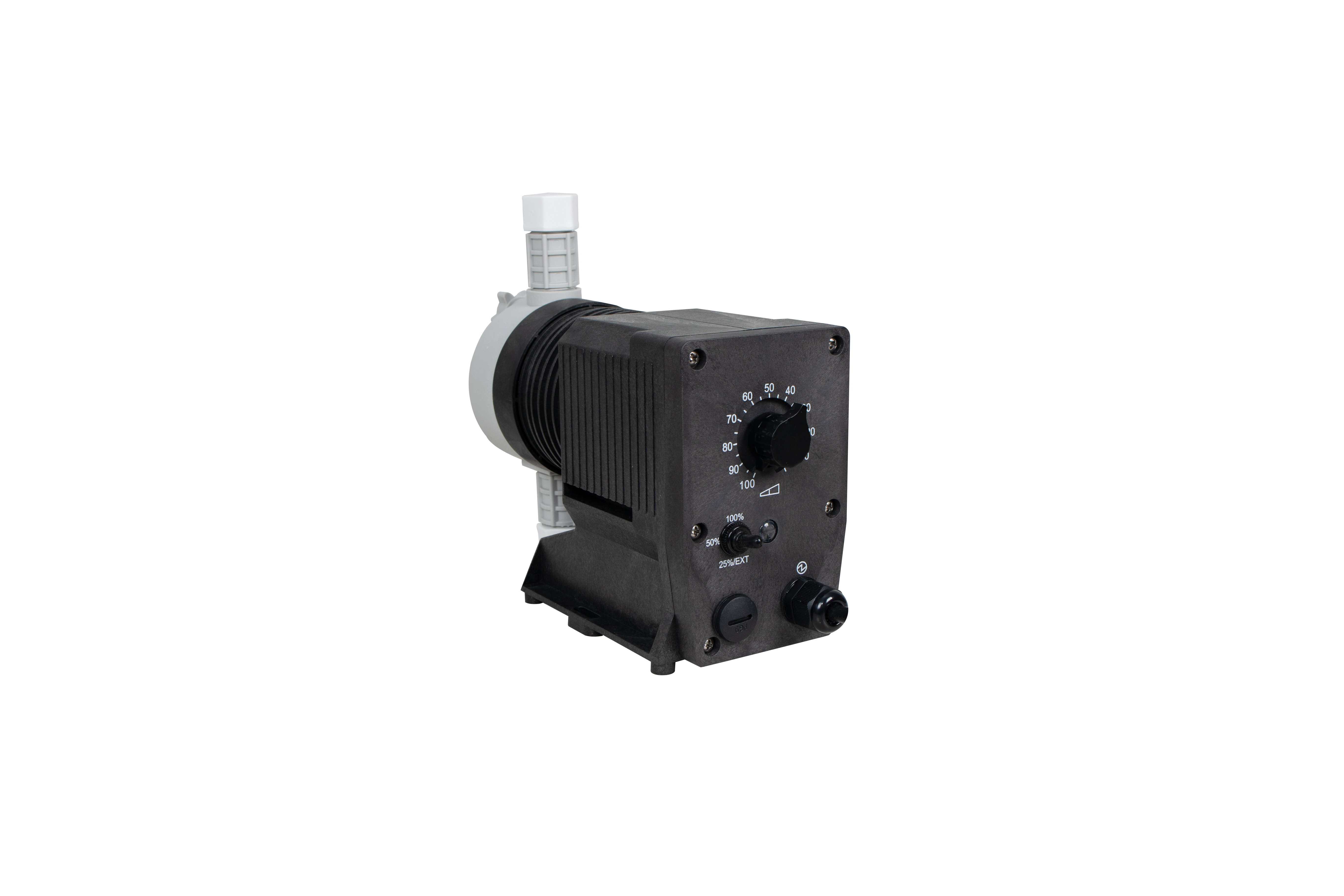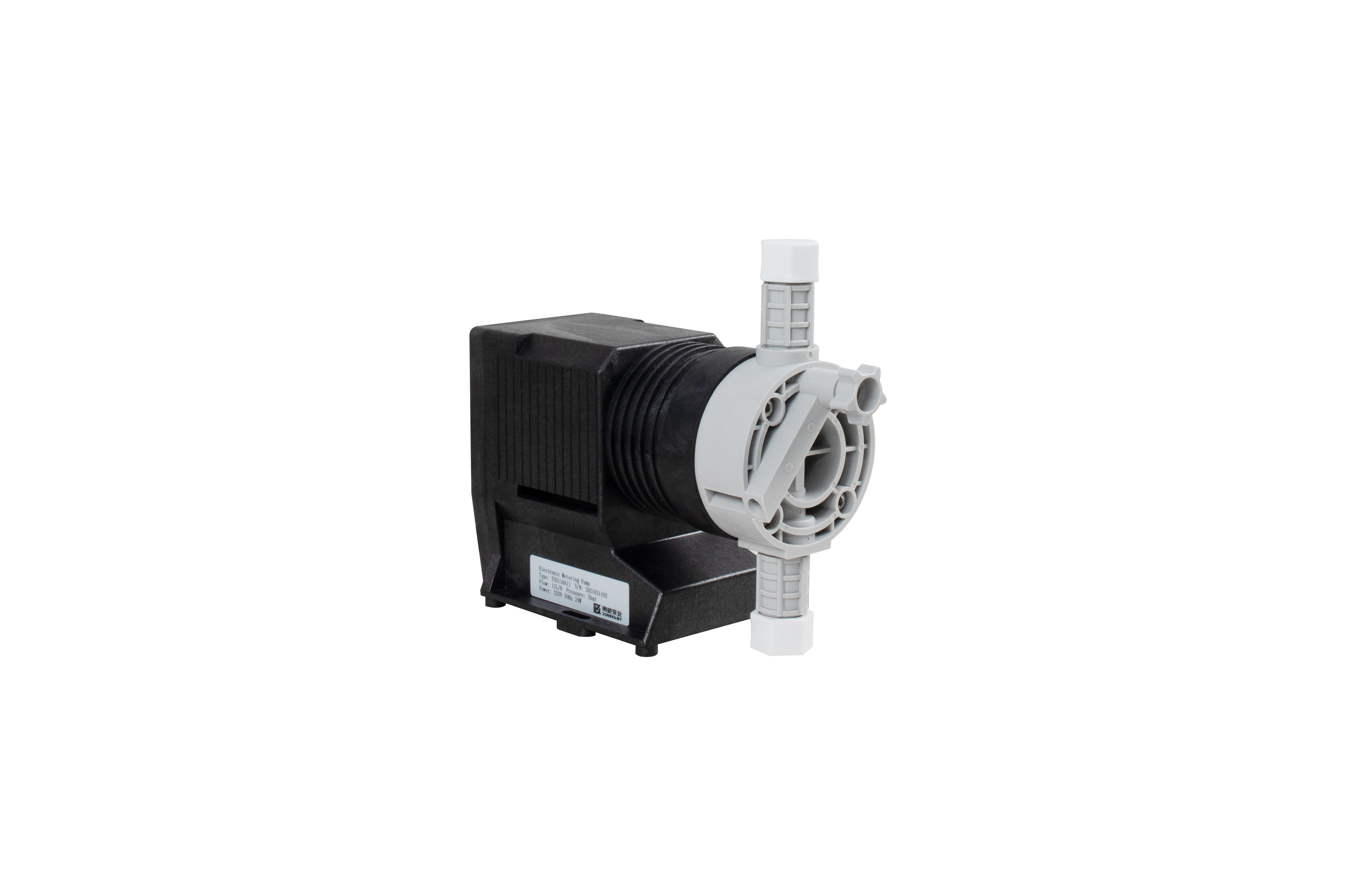- English
- Español
- Português
- русский
- Français
- 日本語
- Deutsch
- tiếng Việt
- Italiano
- Nederlands
- ภาษาไทย
- Polski
- 한국어
- Svenska
- magyar
- Malay
- বাংলা ভাষার
- Dansk
- Suomi
- हिन्दी
- Pilipino
- Türkçe
- Gaeilge
- العربية
- Indonesia
- Norsk
- تمل
- český
- ελληνικά
- український
- Javanese
- فارسی
- தமிழ்
- తెలుగు
- नेपाली
- Burmese
- български
- ລາວ
- Latine
- Қазақша
- Euskal
- Azərbaycan
- Slovenský jazyk
- Македонски
- Lietuvos
- Eesti Keel
- Română
- Slovenski
- मराठी
- Srpski језик
Pay attention to the debugging of these three aspects when using electromagnetic metering pump
2022-07-04
Electromagnetic metering pump is a kind of metering pump which uses electromagnetic push rod to drive diaphragm to reciprocate in the pump head, thus causing the volume and pressure of the pump head chamber to change, and then the pressure changes to cause the opening and closing of the liquid suction valve and the liquid discharge valve, so as to realize the quantitative suction and discharge of liquid. Electromagnetic metering pump is a kind of metering pump which is driven by electromagnet and designed for conveying low-flow and low-pressure pipeline liquid.
The electromagnetic metering pump can realize the two-dimensional adjustment of the output of the metering pump by adjusting the stroke length L and the stroke frequency F when the metering medium and working pressure are determined. Although both stroke length and frequency can be used as adjustment variables, in engineering applications, metering pumps generally regard stroke length as a coarse adjustment variable and stroke frequency as a fine adjustment variable: adjust the stroke length to a fixed value, and then realize fine adjustment by changing its frequency to increase the flexibility of adjustment. In relatively simple applications, the stroke length can also be set manually, and only the stroke frequency can be used as an adjustment variable, thus simplifying the system configuration.
First, metering pump conventional analog/switch signal adjustment mode
In the application of process control, 0/4-20mA analog current signal is used as the standard of signal exchange among sensors, controllers and actuators. Metering pump with external control function mainly adopts this method to realize the external adjustment of stroke frequency and stroke frequency. The position servo mechanism of metering pump is a common method to adjust the stroke length. The integrated servo mechanism is designed to directly receive the 0/4-20mA control signal from the regulator or computer, and automatically adjust the stroke length within the range of 0-100%.
Relatively speaking, there are many ways to adjust the stroke frequency, including variable frequency motor control and direct relay contact control. The variable frequency governor controlled by 0/4-20mA current signal drives the motor of metering pump to run at the required speed, thus realizing the adjustment of stroke frequency. For electromagnetically driven metering pumps and some motors, external contact signals can also be used to adjust the stroke frequency.
Second, Control mode of metering pump base
In some special occasions, such as pH value adjustment, the automatic metering pump acts as the actuator, adding acid or alkali under the control of the regulator. In order to simplify the system configuration and improve the reliability, the embedded control system with microprocessor as the core is directly integrated into the metering pump, and only one external pH sensor can form a complete regulating system. The concept of basic intelligent metering pump can also be used to control other process parameters, such as oxidation-reduction potential (ORP) and residual chlorine concentration adjus
Third Program control of metering pump setting
The electromagnetic metering pump can realize the two-dimensional adjustment of the output of the metering pump by adjusting the stroke length L and the stroke frequency F when the metering medium and working pressure are determined. Although both stroke length and frequency can be used as adjustment variables, in engineering applications, metering pumps generally regard stroke length as a coarse adjustment variable and stroke frequency as a fine adjustment variable: adjust the stroke length to a fixed value, and then realize fine adjustment by changing its frequency to increase the flexibility of adjustment. In relatively simple applications, the stroke length can also be set manually, and only the stroke frequency can be used as an adjustment variable, thus simplifying the system configuration.
First, metering pump conventional analog/switch signal adjustment mode
In the application of process control, 0/4-20mA analog current signal is used as the standard of signal exchange among sensors, controllers and actuators. Metering pump with external control function mainly adopts this method to realize the external adjustment of stroke frequency and stroke frequency. The position servo mechanism of metering pump is a common method to adjust the stroke length. The integrated servo mechanism is designed to directly receive the 0/4-20mA control signal from the regulator or computer, and automatically adjust the stroke length within the range of 0-100%.
Relatively speaking, there are many ways to adjust the stroke frequency, including variable frequency motor control and direct relay contact control. The variable frequency governor controlled by 0/4-20mA current signal drives the motor of metering pump to run at the required speed, thus realizing the adjustment of stroke frequency. For electromagnetically driven metering pumps and some motors, external contact signals can also be used to adjust the stroke frequency.
Second, Control mode of metering pump base
In some special occasions, such as pH value adjustment, the automatic metering pump acts as the actuator, adding acid or alkali under the control of the regulator. In order to simplify the system configuration and improve the reliability, the embedded control system with microprocessor as the core is directly integrated into the metering pump, and only one external pH sensor can form a complete regulating system. The concept of basic intelligent metering pump can also be used to control other process parameters, such as oxidation-reduction potential (ORP) and residual chlorine concentration adjus
Third Program control of metering pump setting
Due to the internal integration of microprocessor computer, the regulation and operation performance of some metering pump products have been comprehensively improved. Besides real-time metering flow adjustment according to external control commands, it also provides functions such as quantitative addition, time series trigger addition, event series trigger addition, time series trigger addition, etc., and also provides useful information such as the total amount of pumped fluid, the remaining stroke number of metering pump, the amount of fluid to be transported, the set stroke length and other related working parameters.





